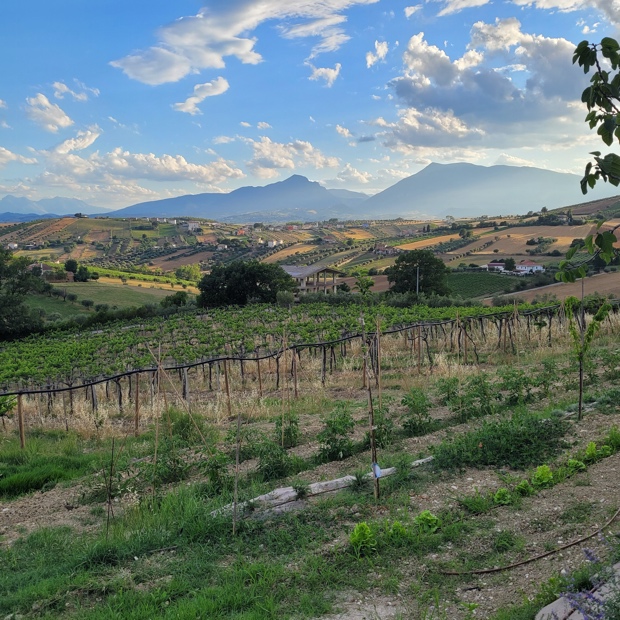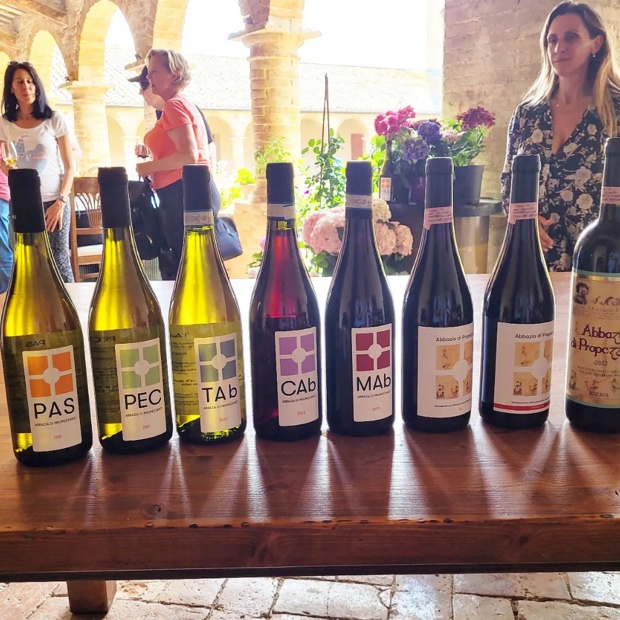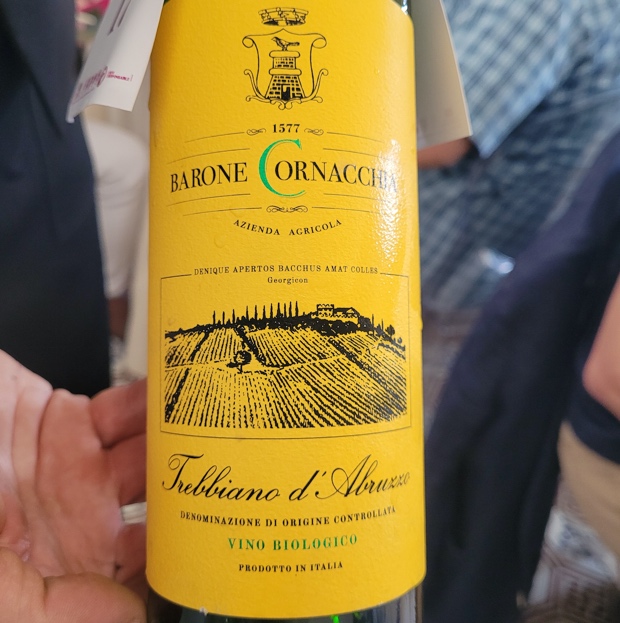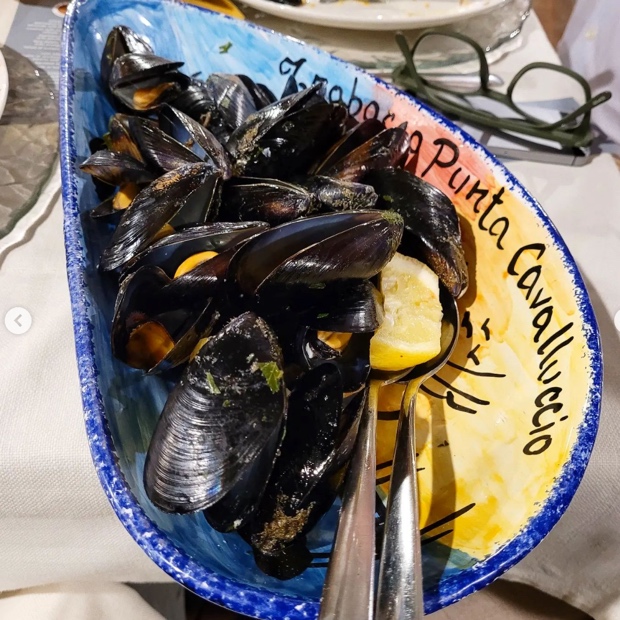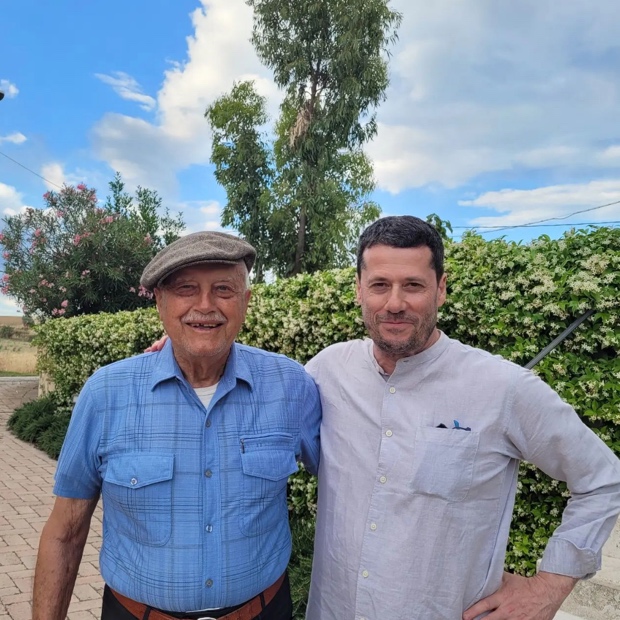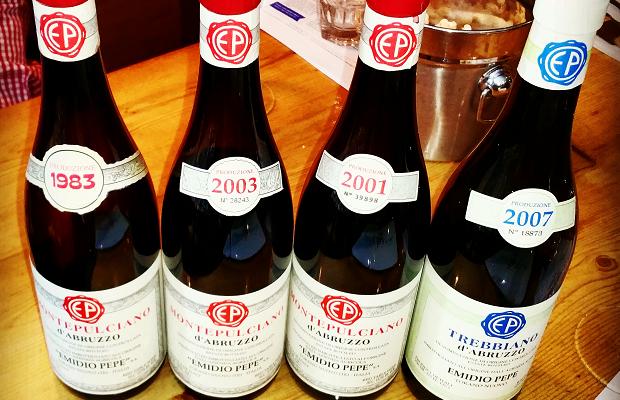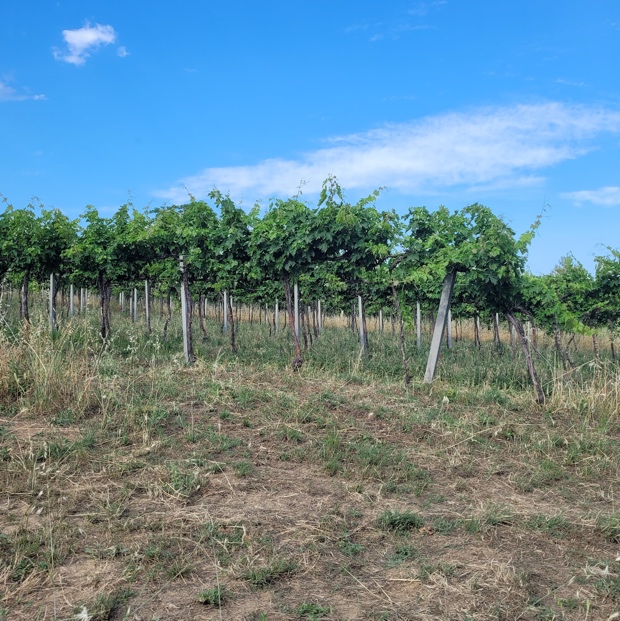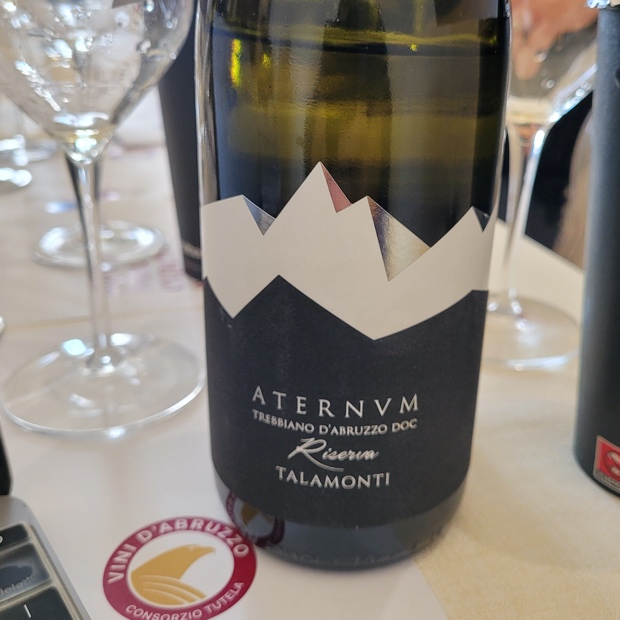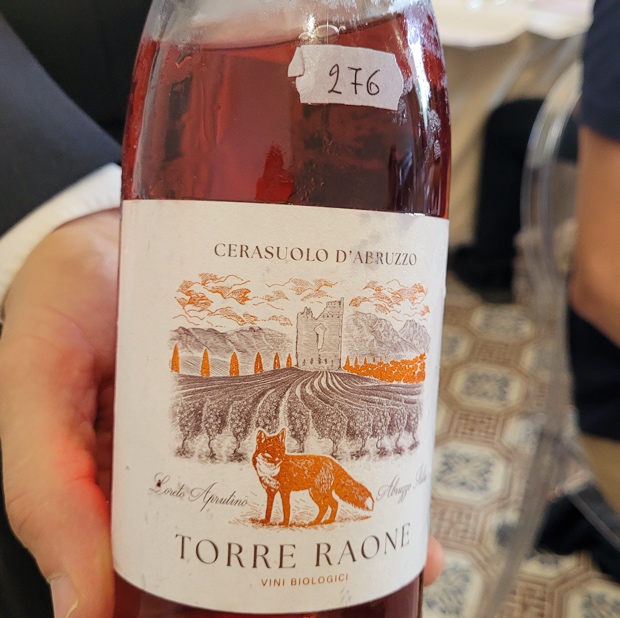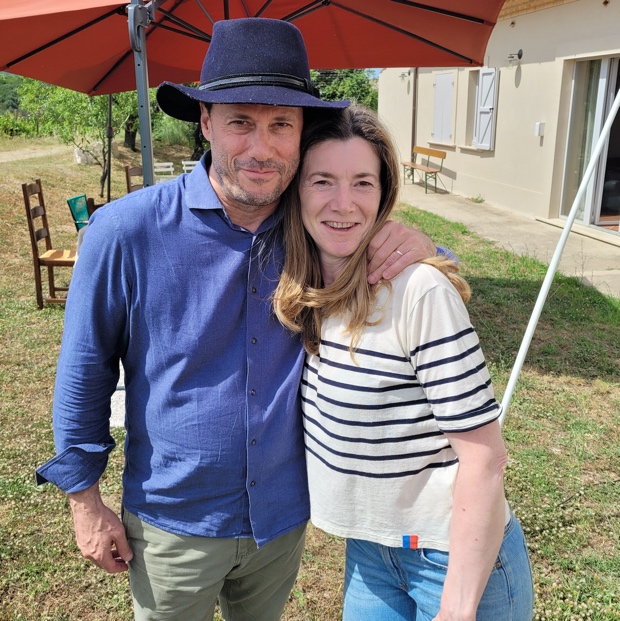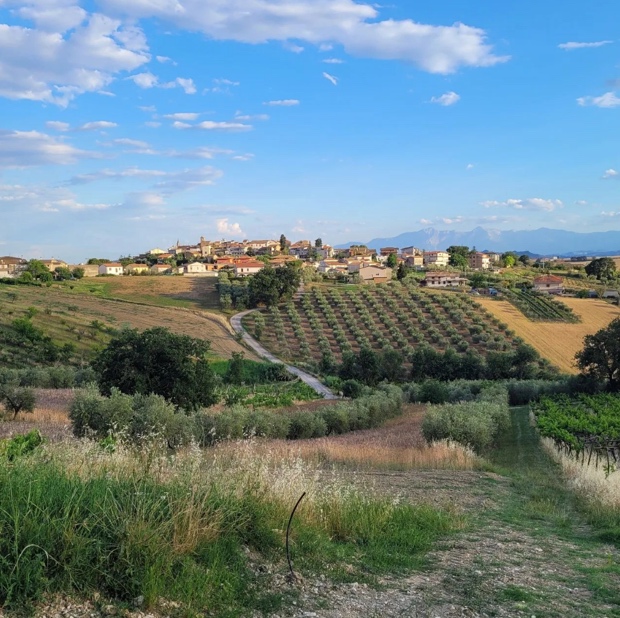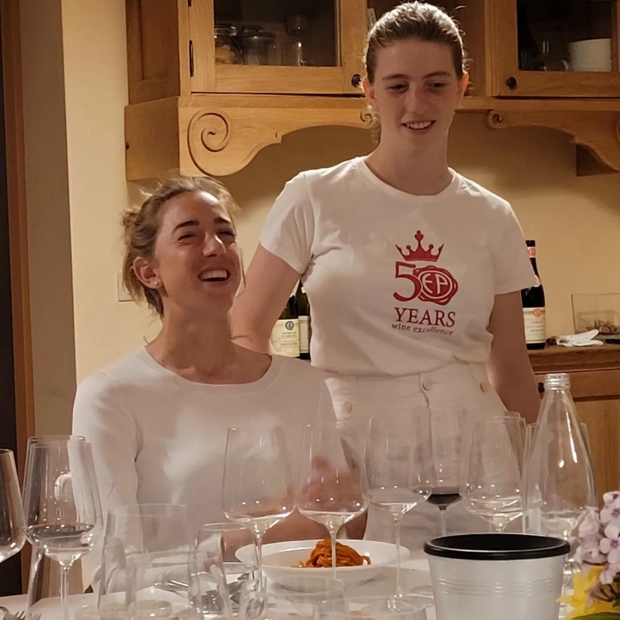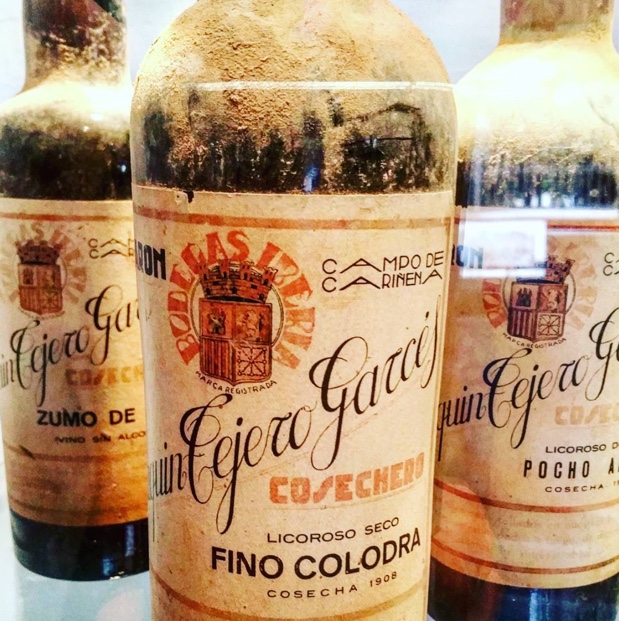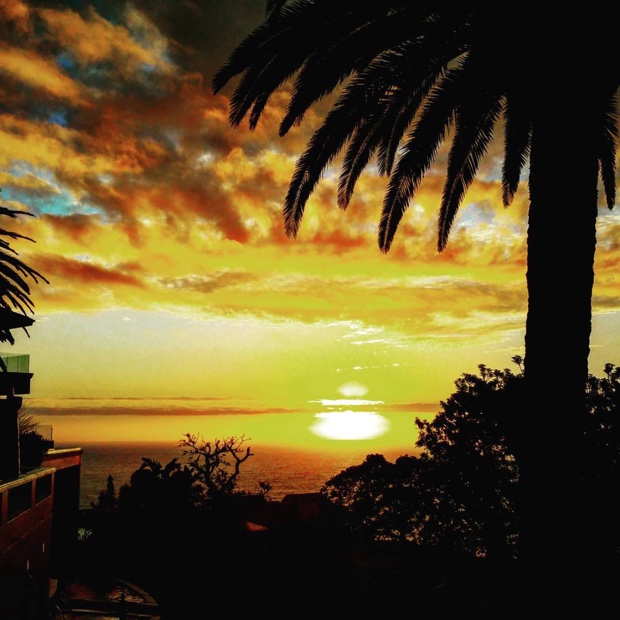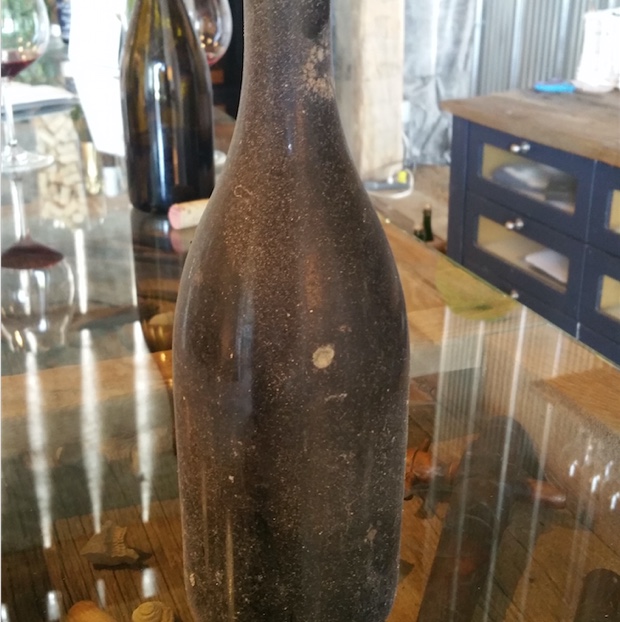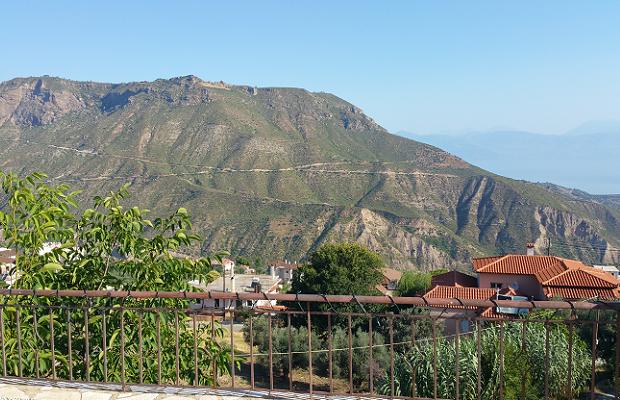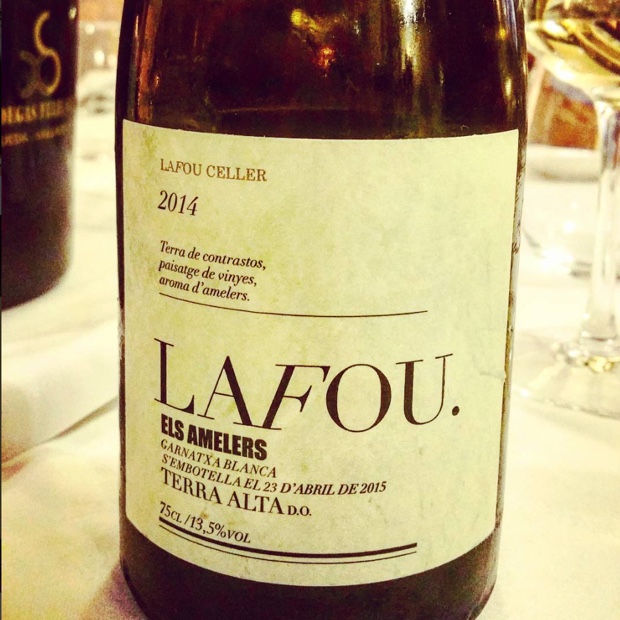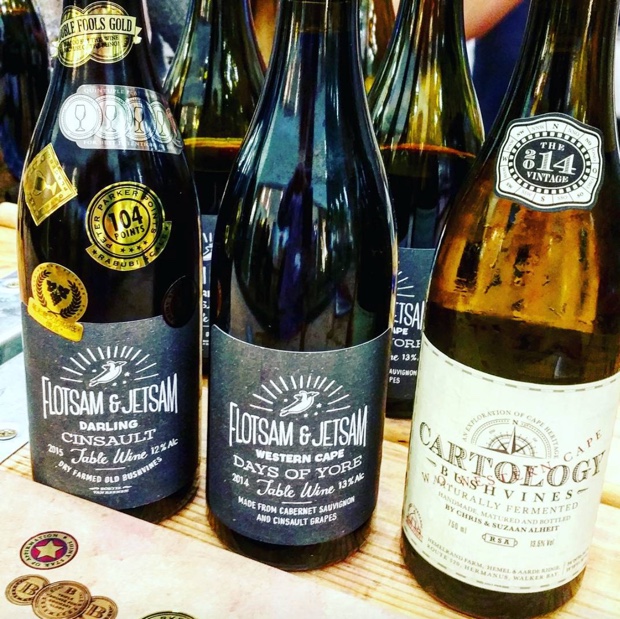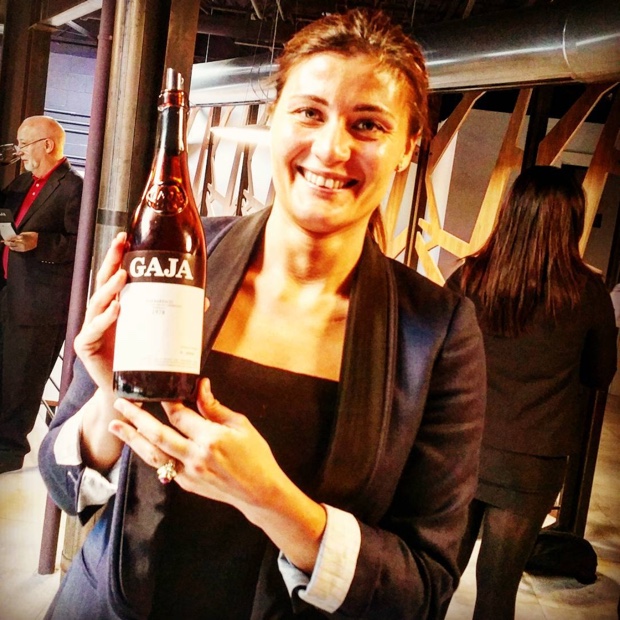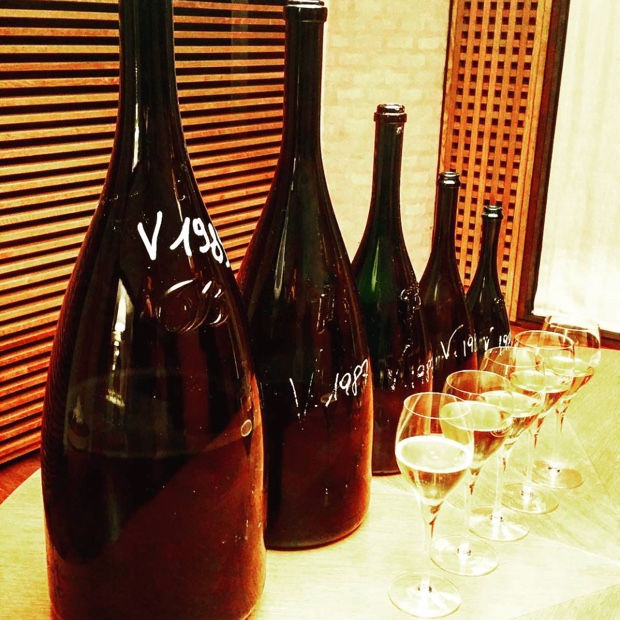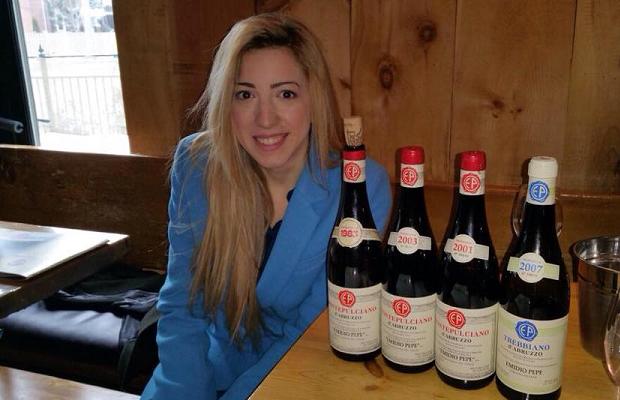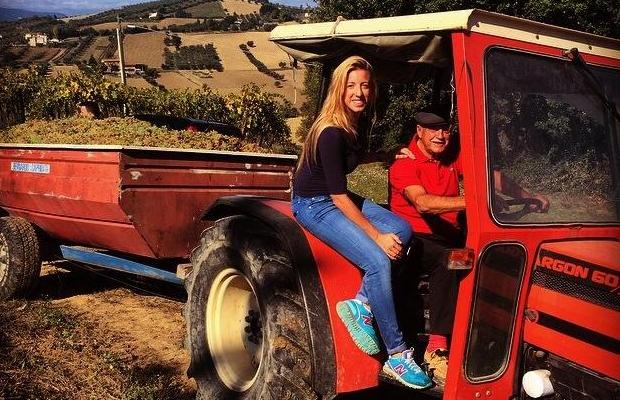The Italian wine experience and lexicon of denominational constructs are a varied and complex weave that follow no true script as it pertains to appellative laws. There are many regions where the decrees of DOC, DOCG and IGT (or IGP) tow a definitive line and yet others where the system is either turned on its head or clouded by sub-appellative titles that bring multiplicity, but also confusion to the exercise. Abruzzo is a territory that embraces it all, ever-changing, adding new sub-contexts and for many producers an opportunity to express the territory through the title of their wines. Yet there is a refrain that stands out, a four-part ideal clear and above all the noise. It takes but four or five days travelling, visiting, listening and tasting with Abruzzese producers to learn, intuit and fully understand the concept. The DOCs of Montepulciano d’Abruzzo, Trebbiano d’Abruzzo, Pecorino d’Abruzzo and Cerasuolo d’Abruzzo are the four members of the regional band. Together they sing in four-part harmony, in sound bites as pop songs, to explain with clarity about the nature of this special land.
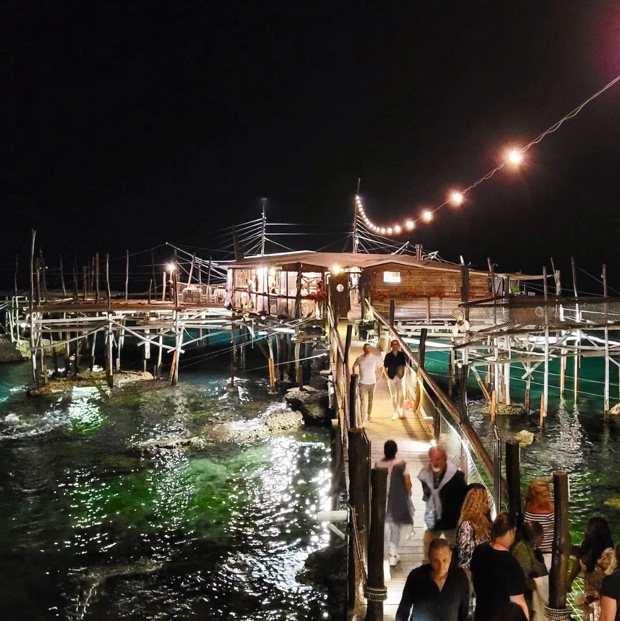
Floating restaurant experience on the Trabocchi Coast – Creative crudo, marvelous mussels and @vinidabruzzo _ Grazie tantissimo Davide @traboccopuntacavalluccio and crew for your seamless service, efficiency and respect – #costadeitrabocchi
By the numbers
There are 12 protected zones in Abruzzo, seven as IGPs and five as DOCs. In addition to the aforementioned four pillars the fifth is Villamagna. The region’s surface area to vines is 36,000 hectares, more than half of which are planted to montelpuciano and the total production is 3.8 million hectolitres. Montepulciano d’Abruzzo is responsible for more than 800,000 hL, Trebbiano d’Abruzzo (192,000), Controguerra DOC (4,000) and Montepulciano d’Abruzzo Colline Teramane DOCG (4,000). Like the four-part appellative harmony of Trebbiano, Pecorino, Cerasuolo and Montepulciano there are four connected provinces or growing areas in Chieti, Pescara, Teramo and L’Aquila, accounting for 76, 10, 10 and 4 percent of wines respectively.
Related – Bucket list visit with Emidio Pepe
The simplest approach would be to divide the winelands into two areas; 65 per cent inland mountain region and its continental climate and the mild climate of the coastal area with its broad yet modest escarpment perched above the Adriatic Sea. La Pergola Abruzzese still stands at 80 per cent to represent the traditional, tried-and-true regional method of vine-training style for the 6,000 growers, 40 cooperatives and approximately 260 (of which 120 bottle their own) “other” aziende or estates in the whole of Abruzzo. More than 30 percent of the territory is protected by four parks (three national and one regional) and a dozen nature reserves and protected areas. The tope three export market breakdown is as follows: Germany (23 per cent), United States (20) and Canada (10). The British and Northern European markets such as Sweden, Denmark and Norway are seeing the highest new growth.
The Consortium
The Consorzio Tutela Vini d’Abruzzo was born in 2002 as a system of control and protection, today constituting 200 members. The current statute, approved by the Ministry of Agricultural and Forestry Policies with decree dated 4 June 2012, attributes diverse and different levels of duties to the Consortium. The Consorzio Tutela Vini d’Abruzzo is led by President Alessandro Nicodemi along with Vice-Presidents Pino Candeloro and Franco D’Eusanio. The Consortium protects wines with controlled designation of origin: Montepulciano d’Abruzzo DOC, Trebbiano d’Abruzzo DOC, Cerasuolo d’Abruzzo DOC, Abruzzo DOC and Villamagna DOC. In addition, under its articles of association, it also protects wines with a typical geographical indication: Colline Pescarasi IGT, Colline Teatine IGT, Colline Frentane IGT, Colli del Sangro IGT, Del Vastese or Histonium IGT, Terre di Chieti IGT, Terre Aquilane or Terre de L’Aquila IGT.
The grapes
Evidence shows that the montepulciano variety has been in Abruzzo since the mid-1700s. Today it is simply everywhere and represents more than half the regional ampelographic base, as well as defining the Montepulciano d’Abruzzo DOC, which also includes the Cerasuolo type. The grape is cultivated on about 17,000 hectares, with a trend in continuous growth (in recent years over 70 per cent of new vineyards have been created with this vine). The idea of Cerasuolo was born in the mountains where the difficulty in ripening led to a Rosé-like wine being produced. Cerasuolo is anything but Rosé and when made correctly in a style that suits its idiosyncratic nature is in fact one of the most unique wines of Italy. The existence of the white grape trebbiano is specific to Abruzzo and that is why the denominational term holds two-fold meaning, both as a description and as an appellative wine: Trebbiano d’Abruzzo. Old trebbiano vines are constantly being discovered and their DNA transformed into new plantings as a way of preserving heritage and biodiversity. There are approximately 14,000 hectares, followed by pecorino to a much lesser degree. But pecorino’s future is bright and also essential for making white wines of longevity in Abruzzo. Finally, there are a series of native, national and international grape varieties such as passerina, cococciola and then sangiovese, chardonnay, cabernet sauvignon and merlot.
Related – Just a spoonful of Tiberio
The Experience
Rugged and beautiful Abruzzo is found in Italy’s central-southeast, situated between the Adriatic Sea and the two massifs of Gran Sasso d’Italia and Majella. Every jaunt, from Rome to the Adriatic sea, sea to village and village to estate is a journey through hills and mountains, always with one of the two massifs and the water as markers for establishing position. One’s head must always be on a swivel to manage bearings and assimilate direction because roundabouts, switchbacks and natural obstructions are constantly acting to disorient and confuse. At the Vini d’Abruzzo Grand Tasting in Vasto 335 wines from upwards of 75 producers were poured to more than 100 international representatives (some of them journalists) in a dramatically beautiful palazzo placed under challenging professional circumstances. Some of the following 48 tasting notes are drawn from that tasting but mostly transcribed from estate visits and dinners during a glorious week spent in Abruzzo back in June of 2022.
Abbazia Di Propezzano Trebbiano d’Abruzzo DOC “TAB” 2020
TAB, as in trebbiano d’Abruzzo. Extreme trebbiano (filare) grown by Guyot, skins only during the pressing, for the immediacy it can bring, ripeness at fruition, essential oils and all the sun together as one. Preserved lemon and tonic, ending quick and to the proper Teramo point. Drink 2022-2023. Tasted June 2022
Abbazia Di Propezzano Cerasuolo d’Abruzzo DOC “CAB” 2020
CAB, as in cerasuolo d’Abruzzo. Not saignée method, instead four hours on skins in direct press. Clean and fragrant, strawberry and cherry, exactly like early June, right in season. A clear vision of cerasuolo within the established DOC, focused and precise. Shows a verdancy at the finish, not by stems but as a variability in the cuvée. Drink 2022-2023. Tasted June 2022

Bellissima e splendida proprietà @abbaziadipropezzano with thoughtful Trebbiano, Pecorino, Cerasuola and Montepulciano. Grazie Cristiana e Paolo _ #morrodoro #viniabruzzesi #viniabruzzo #collineteramane
Abbazia Di Propezzano Pecorino d’Abruzzo DOC “PEC” 2021
PEC for pecorino. Both more freshness and also texture as compared to the trebbiano, while less glück, though there is always a level of that feeling. Ripe in a melon meets guava way, but the sensation is citrus led, not preserved but still fresh and quite vibrant. Drink 2022-2025. Tasted June 2022
Barone Cornacchia Trebbiano d’Abruzzo DOC Macerato 2020
Some skin contact, as per the moniker macerato, though nothing that climbs into a fully natural realm. Punchy and tart, in control of emotions and our senses, nothing oily about it. Not a textural effect created but surely one that works the palate with connectability. Drink 2022-2024. Tasted June 2022
Cataldi Madonna (Ofena) Trebbiano d’Abruzzo DOC Malandrino 2021
Green herbs and near neutral citrus, a spritz of lemon and lime, fresh and crisp. Good clarity if narrowing its focus into one dimension. Crusted exterior and creamy interior. All the dried herbs, fennel pollen and Abruzzese liquorice upon the finale. Drink 2022-2023. Tasted June 2022
Cataldi Madonna Pecorino d’Abruzzo DOC Giulia 2021
Named by Luigi Cataldi Madonna for his daughter Giulia, next and current generation winemaker and face of the family business. Pecorino is also a next step white, seeming to hyperbolize from the trebbiano where fresh herbs and the aerosol of lemon and lime spritz on through, light and with excitable character. Giulia speaks about this wine and in turn a sip transmits more information and emotion as compared to Malandrino. Drink 2022-2024. Tasted June 2022
Cataldi Madonna Pecorino d’Abruzzo DOC Super Giulia 2019
A wine of double selection, from the best parcels of pecorino over two hectares and of course named after the winemaker. Takes pecorino to another level for the estate, for Terre Aquilane and Abruzzo. Increased body and mouthfeel, all the summer herbs and now true squeezed citrus captured. Character pecorino with balanced intensity and linger. Drink 2022-2026. Tasted June 2022
Cataldi Madonna (Ofena) Cerasoulo d’Abruzzo DOC Malandrino 2021
Quite proper Cerasulo because it heeds the under phenolic call where montepulciano is vinified half as a white and half as a red maceration, aka svacata, then finished together in fermentation. A retro-fitted way to make neither a red nor a white wine but a doppio, not exactly Rosato though you might be conditioned to think of it this way. Really smart and traditional in modern rags not to mention wholly in balance. Drink 2022-2025. Tasted June 2022
Cataldi Madonna (Ofena) Cerasuolo d’Abruzzo DOC Piè Delle Vigne 2021
Not red and not white “but something in the middle.” Like the Malandrino it is montepulciano vinified half as white and half as red through macerations, i.e. svacate, then finished together in fermentation. Here the red portion is greater than the white yet the sum of parts is similar, albeit reductive. Not surprising considering the philosophy at Cataldi Madonna where oxygenation means trouble. Makes haste to access and assess just what Cerasuolo must be, in respect to tradition from a place where that notion is everything. Piè Delle Vigne, like the ilk of Piè Franco hitting the proverbial nail straight on the head. Some tannins tell us to wait six to eight months and then consume with impunity for four years after. Drink 2023-2027. Tasted June 2022
Cataldi Madonna (Ofena) Montepulciano d’Abruzzo DOC Malandrino 2020
Montepulciano is also reductive in the way of Cerasuolo yet in all out red the salumi character is omnipresent. Abruzzese skins, musky and fortifying, the local equivalent of finnochiona, perhaps Ventricina Picantino, spiced and also just a bit toasted nutty. Lovely aromatic front and serious tannin right up front. My goodness what a tannic and intensely chalky montepulciano. Aging is only in concrete and stainless steel to make sure the fruit stands erect and at the fore. Yes it is tart to the nth but the bones, stuffing and potential are all there. Better acids than many and while there is some structure it’s really not demanding at all. Still it needs time to assimilate all the structural parts. Long finish confirms the quality and the trenchant intendment. Drink 2023-2027. Tasted June 2022

The gem of Ofena, Il Forno d’Abruzzo, Madonna del Piano and Terre Aquilane is Giulia’s @cataldi_madonna where this beautiful fertile valley transforms into terroir representative in Trebbiano, Pecorino, Cerasuolo and Montepulciano
Cataldi Madonna (Ofena) Montepulciano d’Abruzzo DOC Giovago 2020
An experiment at least as far as elévage is concerned, to make a wine from the best selection of montepulciano grapes without any wood; no tonneaux, barriques nor botti neither. And yet there is creamy lees, malolactic texture and also a cupboard of spice. The concept is to see if this montepulciano can age with the best of them, going it alone with only stainless steel as the vessel in which it was raised. Five-plus years should be a guarantee. Drink 2023-2027. Tasted June 2022
Cataldi Madonna (Ofena) Montepulciano d’Abruzzo DOC Toni 2018
Montepulciano that spends a year in botti (25 hL) and then one year in bottle. So apposite to Giovago, with oak resins and toasted notes though really just a relative turn against the other two montepulciano from Cataldi Madonna. Compared to many other Abruzzese this is really quite tame and subsequently floral, crunchy and acid-driven. Tannins are firm and ripe, in slight rigorous demand though with more bark than bite. Tastes like Swartland syrah, of meaty pancetta and iron. Tripping awkwardly in the present though a really solid wine, a bit boozy though that too should settle in. Drink 2024-2028. Tasted June 2022
Cantine Mucci Pecorino Santo Stefano 2021, IGT Terre Di Chieti
Nicely rendered and delineated pecorino, inching into tart and edgy but always residing on the ledge and remaining in that necessary location of fruit to acid balance. Really long finish indicates proper farming and cellar attention to detail. Drink 2022-2024. Tasted June 2022\
Cerulli Spinozzi Trebbiano D’abruzzo DOC Gruè 2021
A trebbiano that turns inward in a taut and implosive way yet also showing a true juiciness. Citrus all over. Drink 2022-2023. Tasted June 2022
Cerulli Spinozzi Cerasuolo d’Abruzzo DOC Coralto Superiore 2020
Deeper and more pressed though within reason. Brings out a minor amount of brittle tannin through that maceration. Not a hard wine per se but a bit austere, green even. Green and red cohabitants. Drink 2022-2024. Tasted June 2022
Day-glo, cotton candy yet tart red citrus in currant and pink grapefruit. Crunchy and searing. Drink 2022-2024. Tasted June 2022
D’Alesio Vini Trebbiano d’Abruzzo DOC Tenuta Del Professore 2015
Dedicated to current generation’s gradfather Mario D’Alesio, Professor of Agriculture for 45 years, born in Colle di Moro (Città Sant’Angelo) in 1922. Airy, fragrant and aromatic, a gently pressed trebbiano meant to satiate a parched palate, here and right now. Straight lemon citrus juicing. Drink 2022-2023. Tasted June 2022
Emidio Pepe Trebbiano d’Abruzzo DOC 2009
The youthfulness of honey after ten years turns to racy citrus and a vapour trail smoulders behind in this petrol-mineral and flinty trebbiano. The tenure is just about 35 deep for Emidio Pepe and this seems to exist in a transitional-next level aging epoch (in and around 2009) for an Abrusseze trebbiano that shows 12-plus year-old wisdom. Not only wisdom but calm and good nature. The finish carries a Manzanilla character that is an EP speciality but only in certain vintages. I suppose this would be one. Drink 2022-2028. Tasted June 2022
Emidio Pepe Trebbiano d’Abruzzo DOC 2004
As with all aged trebbiano (d’Abruzzo) from Emidio Pepe there comes about an almost (if I may) Jura meets Hunter Valley character, here by the hands of Sofia Pepe who was winemaker at the time. A seasonal profile for sure, cool-ish and comparatively more so than the 2009 tasted alongside. Chamomile and scraped orange skin, a true juiciness and most of all a textural element that sets it apart. There is a tart component as well, almost grapefruit, a peppery kick and piques everywhere, especially on the back end. Drink 2022-2025. Tasted June 2022
Emidio Pepe Pecorino d’Abruzzo DOC 2013
Emidio Pepe have been working with the grape since 2010, after planting in 2006 and 2007. A variety connected to the mountains, north facing, protected from the sun. Aromatic, thick skinned in tight punches like pinot noir. Glistening, viscous, a scintillant of a white wine and leave it to Emidio Pepe to see it age. A one point four hectare vineyard right behind the house. Acidity is easily maintained, especially from a cool vintage which also happened to be wet. A saffron note suggests a smile of botrytis and now like all aged EPs there is honey and here, also green fig. A grape high in pH and yet the opposite seems to be what 2013 delivers. And with age the viscosity builds, the aromatic compounds multiply and mingle with frâiche flavours in Abruzzese cahoots. Drink 2022-2024. Tasted June 2022
Emidio Pepe Montepulciano d’Abruzzo DOC 2007
Hard to imagine a montepulciano of this age could be so fresh and indeed it was a warm vintage but remember two things. Concrete and no wood. Aged in one and without any contact with the other. Also consider it resting in an aging room and then after 15 years, coming away cool, crisp and clean. That it exhibits with grace and esteem is the problem solved, like grandfather and the way he walks, carries himself, passes the torch. A smoky subtlety and even now the initialization of fungi porcini but truth is only secondary notes are at the fore. Drink 2022-2027. Tasted June 2022
Emidio Pepe Montepulciano d’Abruzzo DOC 2003
Much further advanced as compared to 2007, not surprising considering the heat of the vintage and yet acidity is so very preserved. Also consider this having rested in an aging room and then, after 10 years, opened to decant from sediment and then re-corked to ensure its ultimate refinement. That is has kept and behold as it still rolls along. Last tasted June 2022
At the teenage (in wine years) number 12 this is showing less evolution than expected, especially in consideration of the European year that was 2003. Another divaricating Abruzzo, with a dried fruit component that pullulates in a very hydrated way. From a scorching season where anxiety was felt by both the vines and their keepers. Possessive of a bricking that gives of the cracked earth, of dusty, ambivalent rocks and warm, pulpy air. Through the humid tones and with thanks to pergola trellising, balance prevails with close encounters in acidity of the rampant kind. Tannins rage as well, strong and bullish above the earthy notes and peppery berry bites. The old vines and sleight of winemaking hand are ensconced to this vision, void of faults and yet advancing from the frame. Needs just a few more years to find the median point on the chronometer. Drink 2018-2023. Tasted March 2015
Emidio Pepe Montepulciano d’Abruzzo DOC 2002
The subtle and gentle elegance of 2002 is almost mystifying, if at least a surprise that kinda hypnotizes. Memory serves up a case of conflict and adversity, if also vintage envy for the bookends of 2001 and 2003. And yet the cool of the night prevails to elongate a montepulciano for our pleasure and make it sing 20 years later. It was also decanted to reduce the lees sediment and then re-corked for our benefit. Words cannot express what a beautiful place this 2002 EP is found to be. It is a treat to taste and also behold, exactly as of right now. Drink 2022-2026. Tasted June 2022
Emidio Pepe Montepulciano d’Abruzzo DOC 2001
Laden with Brett and other exceptional volatility. The lift and high tonality are at the threshold of problematic. Less so on the palate but there are clearly concerning elements in this bottle. Last tasted June 2022
If the ’03 acts a bit like a hormonal, impulsive, testy, cavilling or petulant teenager, this 2001 is the adolescent. Full of boundless energy, willingly and excitably adventurous and ready to participate in the game. This from a terrific vintage with great aging potential, here Montepulciano manifests with gravity defying weight, like careful Nebbiolo or graceful Burgundy. Where this separates itself from other Grand Cru varietal infinity is in its yeast directive. Singular, remarkable, devoid in spice as if by wood. The structure is innate, indigenously calculated, developing in bottle, verbalizing flavour. Like a bone from the skin of the clay, piaculum by limestone, passed through and brought to light by the leavening catalyst. Drink 2020-2036. Tasted March 2015
Emidio Pepe Montepulciano d’Abruzzo DOC 1983
After seven more years this 1983 remains and persists as one of the greats. “It was the first important vintage that we piled up bottles so high in the aging cellar,” explains Chiara. It marked a turning point for her grandfather and while the tannins are of course long gone the acidity still rises, bringing it into balance at nearly 40 years of age. “It was undrinkable to grandfather because it was so dense and powerful in its first years. The key to understanding and making his wine was time.” This is not a wine that has too much of anything and it is so organized. The aromatics, of cinnamon, rose petal and fenugreek are in multifold metaphysical existence and concentration. They are the driver for all else to follow. Last tasted June 2022
In 1983, the bottling is the Riserva. Give Emidio Pepe’s reds thirty odd years to develop and the impossible happens. To postulate in a moment’s assessment without remembering the pious tradition with which this was made would be a crime against Pepe, Abruzzo, the natural world and the wonders of the universe. With this much passage the spice cupboard that emits is wow times a thousand. Clove, cinnamon, cardamon, orange peel, galangal and like golden raisins that pass through quarries to become rubies. This wine is perfect. It has not broken down an iota. It requires no decanting. It defies logic, perception and time. There is no sediment, only energy. Speaks from the glass as if it were a child of destiny and mythology. The 1983 Emidio Pepe Montepulciano d’Abruzzo Riserva arrives from along the same road taken but its transmogrification proves that the result, with thanks again to the endemic froth, is different every time. Drink 2015-2029. Tasted March 2015
Jasci Pecorino d’Abruzzo 2021, IGT Terre Di Chieti
This is not only high level but tremendous value pecorino with both drive and multifarious flavour compounds. It’s about as ripe and fruitful as it gets for the grape out of Abruzzo but there’s a great foil provided by energy, acidity and most of all salinity. Gives and gives of itself some more, lingers and finishes at wet stones, botanical tonic and a return of fruit once again. All around winner. Last tasted October 2022
Well aged and very flinty, struck chord of saltiness and searing citrus. Will age quite well by showing real secondary character. Drink 2022-2024. Tasted June 2022
Masciarelli Cerasuolo d’Abruzzo DOC 2021
Sheds a sour and acetic layer but next up is salty and invigorating. The intensity of this rustic Cerasuolo demands food. Drink 2022-2024. Tasted June 2022
Nicodemi Trebbiano d’Abruzzo DOC Notari Superiore 2020
Well thought out trebbiano, quite taut and wound yet generous enough to deliver some satisfaction. Mainly lemon with moments of both grapefruit and green citrus. Perfect little sipper. Drink 2022-2024. Tasted June 2022
Nicodemi Trebbiano d’Abruzzo DOC Cocciopesti 2020
Clearly more concentration and depth of flavour, but also character for a trebbiano that works the glass and especially the palate. A fine step up from the already impressive Notari Superiore. Drink 2022-2025. Tasted June 2022
Rosarubra Montepulciano d’Abruzzo DOC 2018
Smells like proper Abrusseze montepulciano, of fully reasoned and formed dark fruit and then come the soy, resins and depth provided by the barrel. Juicy with great acidity and just a hint of verdancy, merlot like in the tannins. Has energy and drive and given three or four years should really settle into its thick skin. Drink 2022-2027. Tasted June 2022
Savini Montepulciano d’Abruzzo DOC Bibbio Bio 2020
Strappelli Trebbiano d’Abruzzo DOP 2020
From 50 year-old vines on the farm of Guido Strappelli, organic and now a matter of precision farming for old clones kept alive as much as possible. To maintain their relationship with the terroir in Torano Nuovo. Quite a stony nose with a hint of reduction that comes through in minor smoulder. Lime is the citrus and there is more (apple) orchard fruit than many or most examples of Td’A. Also the good green notes, herbal to botanical but not overtly phenolic. Drink 2022-2024. Tasted June 2022
Strappelli Pecorino d’Abruzzo DOP Soprano Controguerra 2020
The pecorino vineyard ripens earlier and the early pick results in more phenolic, botanical, oily and dried lime character. Green fruit, plum being the closest idea and nothing sour or tart whatsoever. Early picked but not high in acidity yet a balance is struck between the two concepts of citrus in this wine. Lots of poise here and a wine that grows in stature as you work with it. Drink 2022-2025. Tasted June 2022
Strappelli Pecorino Soprano 2020, IGT Colli Aprutini
Aged pecorino may not be something of great knowledge and also understanding yet here from 2016 the evolution is really quite slow and unintentionally deliberate. The fruit is stable and yet moving into leathery white, yellow and green fruit. Salato, as opposed to sale and sapori as opposed to sapidite. Has aged really well and is quite satisfying right now. Drink 2022-2023. Tasted June 2022
Strappelli Cerasuolo d’Abruzzo DOP 2021
Oh the magnetic, magic and day-glo pink of it all, a true Rosé in cerasuolo of good red fruit but certainly acetic and with unresolved fermentation aromas. Like raspberry beer and kind of odd in cerasuolo. The native yeasts and low sulphur are the impetus for how this shows, sweet yet sour, of candy floss and bubble gum. Drink 2022-2024. Tasted June 2022
Strappelli Montepulciano d’Abruzzo DOP 2018
A 75 per cent stainless steel fermentation and then 25 per cent is aged in barriques. Bold, tannic, structured and full in every respect. Plenty of berry, cake and wood but truth be told there is precision and balance here, followed by just some hard brittleness in the tannins. Fruit is true quality and while the seeds lag just behind the drupe it’s par for the course and in a wine of concentration plus extraction there’s no shock in the result. All in all the quality can’t be denied. Drink 2024-2028. Tasted June 2022
Strappelli Montepulciano d’Abruzzo Colle Trá 2015, Colline Teramane DOCG
After spontaneous fermentation Colle Trà spent 18 months in tonneaux and 18 more in bottle. Takes the normale to the nth level, similar concentration and yet the intensity of flavours and chalky texture add up and reside at the top of the Teramo mountain. A soupy stew of dark fruit, soy, balsamic and everything wood can deliver. It’s what people make and what many like to drink. Old school to represent these last three decades of making big red Italian wines. Drink 2022-2026. Tasted June 2022
Good flinty beginning and a honeyed motion bringing some texture and balance to a trebbiano that serves intensity of citrus and really long linger. Satisfying and complex. Drink 2022-2024. Tasted June 2022
Terre d’Erce Cerasuolo d’Abruzzo DOC 2021
Sour cerasuola, vivid and while strawberry and lemon are all over this is just a bit acetic and edgy. Drink 2022-2024. Tasted June 2022
Torre Raone Cerasuolo d’Abruzzo DOC 2021
Fine aromatic harmony between fresh fruit and ocean air, or at the very least a valley misted by winds blown in, around and down from mountains. Properly tart and never bracing, light on its feet and with great complexity. Drink 2022-2024. Tasted June 2022
Tiberio Trebbiano d’Abruzzo DOP 2021
Mainly limestone soil with sand and from an area rich in water. Tiberio dry farms broad shouldered vines because the roots can always find water below. Trebbiano comes off of five hectares including vines planted in 2012 not yet used in this production. The Tiberio example carries itself with grace and the feeling experienced at a level above. Like night versus day and touchstones fully realized in this elegant and textured trebbiano rising. Taste the juiciness and the energy, cherish it, mimic the eating of ripe picked grapes straight from the vine at a time when there is neither bitterness nor astringency. This is the harmony now, despite the sprint and chaos in seasons of climate change crisis. Trebbiano ’21 is seamless and satisfying. Drink 2022-2027. Tasted June 2022
Tiberio Pecorino d’Abruzzo 2021, IGP Colline Pescaresi
Tiberio’s 30 hectare Pesacara location is a windy place, ideal to avoid mildew and disease, at 380m with no severe problems by frost. Very close to the mountains so a true mountain climate but also Mediterranean, especially as witnessed by the results of the 2021 vintage. The vines are drawn from organic material found on the property. Started with five vines in 2000, propagated, kept healthy, further planted in 2000 and 2001. Almost one full hectare was created this way. No need to initiate the pecorino discussion by thinking along the lines of intensity because Cristiana Tiberio’s is too free form, openly sensory and one that expresses through full disclosure. Leaves off from trebbiano and accesses another level of grace. No vivid glare or drama but a playful, extended soliloquy, without intermission. Seamless, golden and mellifluous, aromatics transitioning to flavours with undetectable chord changes, palate organza of texture. A reminder that pecorino is a variety born of a mountain climate and not one always capable of fully ripening. This is about as good as that probability will offer but really there is no matter because eight or 8.5 out of ten is ideal. This Tiberio gets there and has the touch in a wine with a strong and pure identity. Drink 2022-2028. Tasted June 2022
Tiberio Cerasuolo d’Abruzzo DOP 2021
“Cerasuolo has character that is not Rosé,” insists Cristiana Tiberio and when a producer makes one of this kind of energy and crunchiness they can say whatever they like. Born in the mountains where montepulciano couldn’t fully ripen and in this style of wine there has to be bite. Which is exactly what Tiberio’s has, in fact it explains what that means. Free-run juice and one look followed by a taste will make you wholeheartedly believe in the proposition. This Cerasuolo retains the identity of the variety and the place, without compromise. These are a people in the mountains who were trying to make red wine and this was the result. And it was good. Tiberio’s is a memory of fruit, in a vintage, as it has to be. Drink 2022-2024. Tasted June 2022
Tiberio Pecorino d’Abruzzo IGT 2009
How can it be possible to exist in a vacuum where 12-plus years do almost nothing to advance the timeline of a wine? Well, perhaps some maturity but all things being equal there is very little secondary character in Tiberio’s 2009 pecorino. Some honeyed notes and a toasty, white peppery edge but oven roast or smoke some meats and the match will interact in very beneficial ways. This organic fruit has persevered, remained subtle and in total control. The story unfolds like that of Cristiana Tiberio’s graceful life, as she is, not just what she does. Drink 2022-2025. Tasted June 2022
Sharp, platinum, straight ahead trebbiano. Light and neutral citrus, simple, quaffable. Reminds of Lugana whites. Drink 2022-2023. Tasted June 2022
Zaccagnini Pinot Grigio Tralcetto 2021, IGT Terre Di Chieti
Made for 10 years now at Zaccagnini, as fresh, simple and neutral as it gets. Basic fruit and herbs, from juicy to drying. Turns botanical at the finish. Juice, product, grapes, lines blurred between the three. Drink 2022. Tasted June 2022
Zaccagnini Montepulciano d’Abruzzo Tralcetto DOC 2019
Spiced monteulciano, of baking mainly by cinnamon, nutmeg and clove. Notably chalky and driven by wood for a highly concentrated and ripe vintage. Reminds of a certain ilk of Rioja though fully versed in dark cherry, then leather and some green tannin creeping in. Drying with tannic austerity. Made with cooperative grapes from Soceita Agricola in Bolgnano. Drink 2022-2023. Tasted June 2022
Zaccagnini Clematis Passito Rosso 2014, IGT Colline Pescaresi
Made from late harvested montepulciano grapes aged in caratelli style small barrels for three years. Finishes at approximately 140 g/L of residual sugar and only 900 bottles are made. An adversarial task to say the least, to manage and tame the grape’s formidable tannins. Inky of reduced balsamic, black cherry, soy and iodine. Thick as oil, sweet like treacle and meaty in a mince way. Requiem for panna cotta or something of the ilk to cut through the density. Drink 2022-2029. Tasted June 2022
Good to go!
godello

A sing-song morning in #atri in the province of Teramo, Abruzzo _ #hadrianum and the Sound of Music at #teatrocomunalediatri
Twitter: @mgodello
Instagram: mgodello
